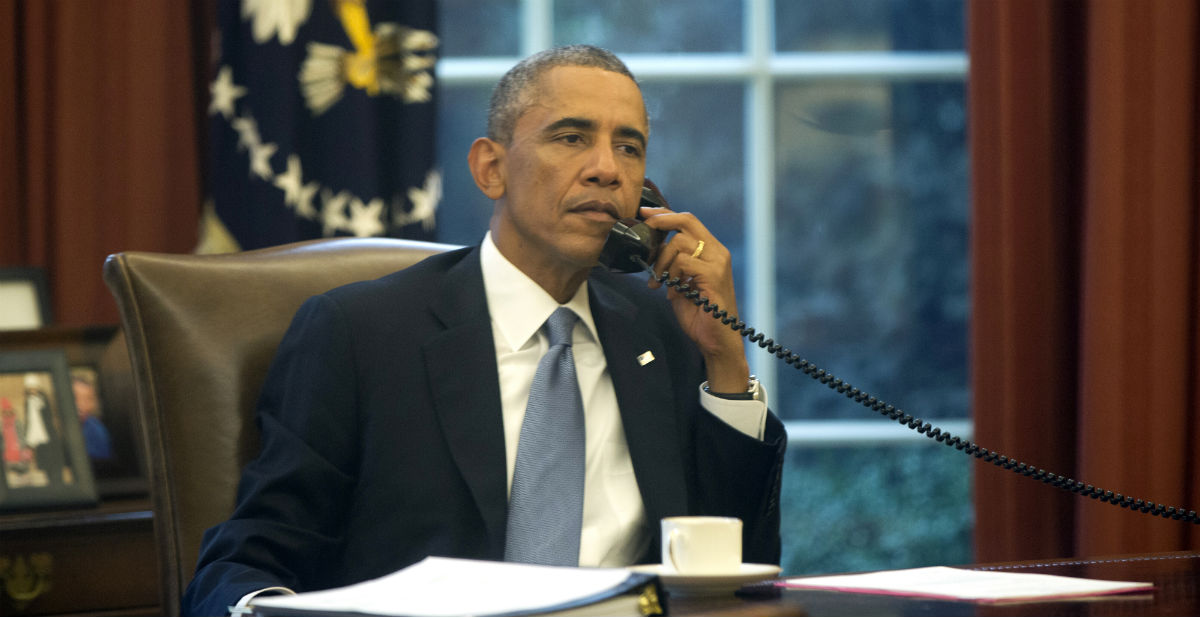Like millions of Americans, Pam Hopmann of Chesterfield, Missouri received a notice cancelling her insurance in September 2013. Her experience after that is a textbook example of the problems caused by Obamacare late last year.
Videos by Rare
“My husband and I started trying to sign up for insurance on the exchange,” she said of her experience in getting a new plan, “but we never got through. We ended up using an insurance agent.”
Then came the rate shock. The plan she chose had a higher premium—$544 per month versus $400 for her old plan. Her new plan also required more cost-sharing. Her old plan had a deductible of $1,000; the new one had a deductible of $1,750.
She would soon experience the phenomenon that became known as the “skinny network.”
“In the fall of 2013 I started receiving letters from my physicians, including my ob/gyn and cardiologist, saying that they wouldn’t be taking insurance on the exchange because the reimbursement rates were too low,” Pam said.
“I just really feel like it was shoved down our throats—like I had no choice. Obama said we could keep our plans and keep our doctors, and I couldn’t do either of those. I think that’s wrong because if you had something you liked, you should have been able to stick with it.”
Millions have had experiences similar to Pam’s because ObamaCare has reduced the quality of the insurance on the individual market. The irony in this is that ObamaCare supporters excused the cancellation of millions of plans late last year by claiming those plans were of poor quality.
President Obama himself called them “substandard.” Noted ObamaCare apologist and MSNBC host Ed Schultz referred to the cancelled plans as “crappy” but only because he couldn’t “use the S-word.”
But as a new study I’ve just released for the National Center for Public Policy Research shows, the quality of health plans on the individual market in 2013 was markedly better than the plans on the ObamaCare exchanges.
The study examined two dimensions of health insurance quality—out-of-pocket costs and provider networks—by examining plans available on ObamaCare exchanges to plans available on eHealthinsurance.com (eHealth) and Finder.healthcare.gov (Finder) in 2013. It compared the plans available to 27-year-old single persons and 57-year-old married couples in ten metropolitan areas.
While quality is often subjective, there is one aspect of quality that is rather objective: the relationship of the premiums to out-of-pocket costs. Specifically, almost no one would consider it an improvement in quality to pay a higher premium and get less out-of-pocket coverage.
Yet that is exactly what happened on the ObamaCare exchanges. The study found numerous plans on eHealth and Finder that had cheaper premiums and equal or lower out-of-pocket costs than the cheapest plans on the exchanges. There was an average of 33 such plans for a 27-year-old and 10 such plans for a 57-year-old couple.
Milwaukee, Wisconsin led the way for 27-year-olds with an average of 68 plans on eHealth and Finder that had lower premiums and equal or lower out-of-pocket costs than the cheapest plan on the exchange. Louisville, Kentucky had the most such plans for 57-year-olds with an average of 26.
Another aspect of quality that the study examined was the provider networks—the doctors, hospitals and other health care providers a policy covers—available in the plans. Specifically, it compared the number of health maintenance organization (HMO) plans and preferred provider plans (PPO). HMO plans tend to be more restrictive—i.e., cover fewer providers—than PPO plans.
Of course, this dimension of quality is a bit more subjective than the last. There are HMO plans like Kaiser Permanente and Group Health Cooperative that get high marks from consumers. Yet data from the Kaiser Family Foundation on employer-based plans show that people tend to prefer less restrictive networks.
At the height of HMO coverage in 1996, 31 percent of employees with employer-provided insurance were in an HMO plan. By 2013 that had dropped to 14 percent. At the same time, employees in PPOs grew from 28 to 57 percent. Consumers appear to consider the less restrictive networks of PPOs to be of higher quality than HMOs.
Unfortunately, the Obamacare exchanges have worsened network quality. There are fewer PPO plans on the exchanges—an average of 32 fewer for 27-year-olds and 25 fewer for 57-year-olds—than there were on eHealth and Finder. The exchanges had many more HMOs, an average of 16 more for both 27-year-olds and 57-year-olds.
Supporters of Obamacare might claim that the plans on the exchanges are better because they are required to cover “ten essential benefits.” But this is a far more subjective dimension of quality.
Take, for example, the maternity and newborn benefit that all exchange polices must cover. Couples and single women planning to have children would likely find a policy that contained this benefit to be of higher quality than a policy that did not. But many single women, single men and older couples would likely see no value in such a benefit.
People who prefer forgoing coverage of some benefits in exchange for lower out-of-pocket costs and broader networks no longer have that option. Obamacare took away the ability to make that trade-off.
To keep premiums on the exchanges as low as possible, insurers had little choice but to increase out-of-pocket costs and make use of “skinny networks” to offset the benefit mandates and other costly regulations foisted on the American public by Obamacare.
Those sorts of choices should left to individuals. That is why Obamacare ought to be repealed and replaced with a truly free-market health care system that enables consumers to choose the mix of benefit, out-of-pocket costs and networks that best suits them.



